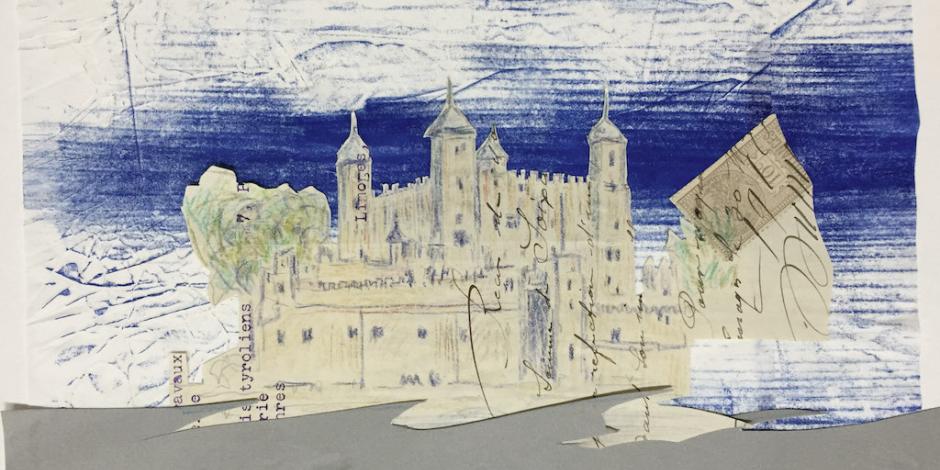Starten Sie den Audio-Text
Mit dem Audio-Player können Sie sich den Text anhören. Darunter finden Sie das Transkript.
Transkript: London – scene of the crime
densely populateddicht besiedeltDensely populated and full of contrasts, London is the capital of Britain and the capital of crime and policingpolizeiliche Überwachungpolicing. It has long been a focus for fictional crime and detectionErmittlungdetection, which continues with modern-day TV series such as
Luther and Marcella, and the mysteryRätsel; auch: Kriminalgeschichtemysteries of Robert Galbraith. Watch TV or read a crime novel, and justice will usually be delivered. A tour of the city’s scenes of true crime and punishment, however, suggests that criminals often escape capture, and crimes remain unsolved.
The Bloody Tower
At busy Tower Hill Tube: the ~ (UK, ifml.)die Londoner U-BahnTube station, gateway to the iconic Tower of London, few people would know that crowds once gathered at nearby Trinity Square Gardens to watch public executions. The heads of the victims were displayed on spikePfahlspikes on London Bridge as a deterrentAbschreckungdeterrent to others.
There are few places with such a long history of crime and punishment as the Tower. Built in the 1070s by King William I, this was a symbol of the power of the new Norman rulers. Through the centuries, it expanded into a castle complex, around which the history of England to evolvesich entwickelnevolved. Today, the Tower is a palace, fortress, tourist attraction and national monument. For nearly 900 years, it was also a prison to some of Britain’s highest-profile rebels, dissidents and criminals. Since 1100, captiveGefangene(r)captives as diverseunterschiedlichdiverse as Anne Boleyn, Sir Thomas More, Guy Fawkes, William Penn (the Quaker leader) and William Davidson (the African-Caribbean rebel) have been imprisoned here. The Tower was not originally built as a prison, so captives were often held in accommodation alongside their jailerGefängniswärter(in), Kerkermeisterjailers. Status and wealth mattered, as did manners. “The better you treated your jailers, the better you would be treated,” says Alfred Hawkins, assistant curator of historic buildings at the Tower.
Some prisoners found ways to escape the thick stone walls. In 1101, Ranulf Flambard, bishop of Durham, got his jailers drunk before using a smuggled rope to escape. Six hundred years later, in 1715, Jacobite rebel William Maxwell escaped execution by dressing in women’s clothes smuggled in by his wife.
The Bloody Tower is so called because of the disappearance in 1483 of two young princes: 12-year-old Edward V and his younger brother, Richard. What actually happened remains a mystery, although their uncle, the future Richard III, is often blamed for the crime.
The last criminals to be held at the Tower, in 1952, if only for one day (for refusing to report for national service (UK)Wehrdienstnational service), were the infamous East End gangsters Ronnie and Reggie Kray. It was a symbolic arrest of the identical twineineiiger Zwillingidentical twin brothers, who had ruled their criminal kingdom with violence and murder.
Jack the Ripper
A ten-minute walk along Royal Mint Street and across Leman Street leads to the front door of 12 Cable Street, a Victorian house to convert sth.etw. umbauenconverted into the Jack the Ripper Museum. The blood-red facade might suggest otherwise, but the museum to dedicate sth. to sth.etw. einer Sache widmendedicates much of its space to the lives of the five women who were murdered in this area in 1888. The terrible crimes shocked Victorian London and the killer came to be called “Jack the Ripper”. Despite intensive police investigations and several suspectTatverdächtige(r)suspects, nobody was ever to convict sb.jmdn. überführen, verurteilenconvicted, and the murders remain a mystery to this day.
The six floors of the museum are darkened and atmospheric, the walls to plaster sth.etw. beklebenplastered with newspaper headlineSchlagzeileheadlines from the time. Each room contains a historic tableau with models and many original artefacts. Most moving is the simple bedroom at the top of the house, which offers short biographies of each of the victims. Could more have been done to save them? Conditions on the streets of late 19th-century London were grimhart, düstergrim for the poor and the homeless, especially for women and children.
All the murdered women were victims of Victorian society, explains Sam, a researcher and historianHistoriker(in)historian who acts as a tour guide for the Jack the Ripper Museum and leads groups into the heart of Whitechapel. The East End has changed a lot since 1888, but it still offers a stark contrast to the wealth of the neighbouring financial district. It’s no surprise that modern-day film-makers have been drawn to this atmospheric and historic quarter. Located alongside Victorian railway arch (UK)Eisenbahnbrückerailway arches, darkened alleywayGassealleyways and cobbled streetKopfsteinpflasterstraßecobbled streets are Roman and medievalmittelalterlichmedieval ruins of the walls of the City of LondonLondoner Banken- und FinanzviertelCity of London, which for centuries has been policed by its own separate forcehier: Truppe, Einheitforce.
At Mitre Square, in the shadow of a newly to erect sth.etw. errichtenerected steel-and-glass office block UKBürogebäudeoffice block, Sam stops to describe the discovery of the body of Catherine Eddowes in the early hours of 30 September 1888. She had spent the summer hopHopfenhop-picking in Kent, but in London became the victim of an infamous murderer. So gruesomegrauenvollgruesome was the violence against her that many believed only someone with surgicalchirurgischsurgical knowledge could have killed her in this way. Could the killer have been rich and powerful and therefore able to avoid police scrutinygenaue Untersuchungscrutiny and arrest? Sam provides the history and contextZusammenhangcontext of the murders – but leaves visitors to make up their own minds about the likely identity of the Ripper.



